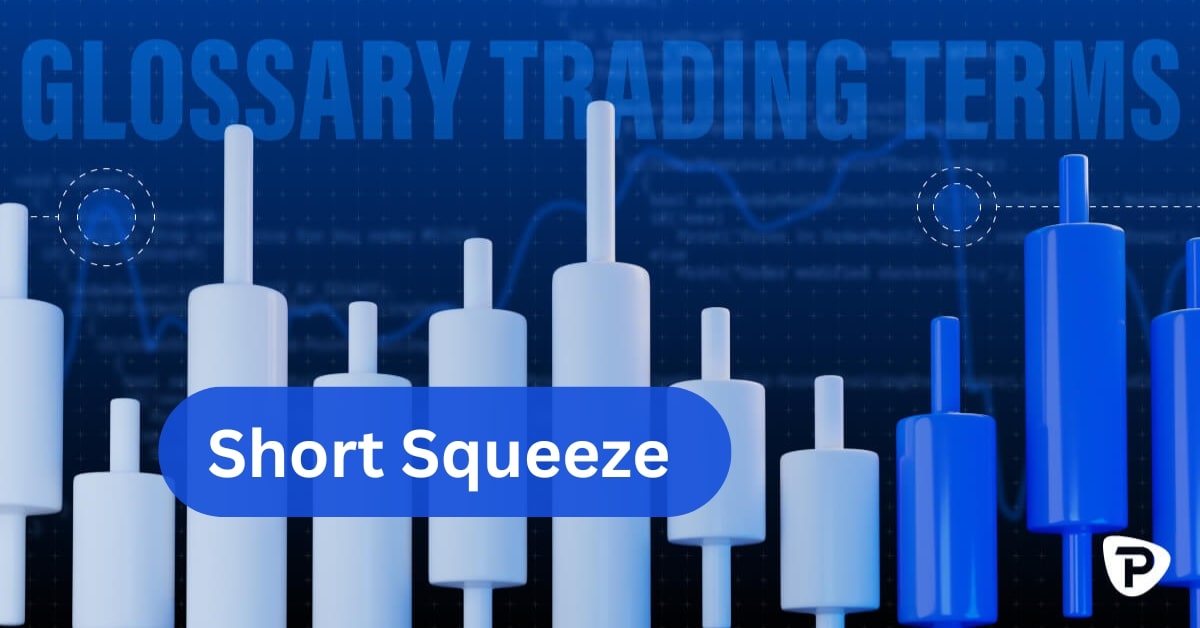Short Squeeze
A short squeeze occurs when the price of a heavily shorted stock rises sharply, forcing short sellers to close their positions by buying shares at higher prices.

Short Squeeze Meaning
This cascade of buying activity can drive prices even higher, creating significant volatility in the market. Short squeezes are often triggered by unexpected positive news or market sentiment shifts and can lead to substantial losses for short sellers while offering rapid gains for other investors. This phenomenon underscores the risks of short selling and the importance of timing and strategy in volatile market conditions.
Key characteristics:
- High short interest: Short squeezes occur in stocks with high short interest, where a large percentage of available shares have been borrowed and sold short. This creates a high-risk scenario for short sellers when prices unexpectedly rise.
- Rapid price increase: A squeeze is typically triggered by sudden events like positive news, strong financial results, or unusual buying activity. This causes a rapid surge in stock price and leave short sellers exposed to significant losses.
- Forced buying: To minimise losses as prices climb, short sellers must buy back shares to cover their positions. This increased demand creates a feedback loop, driving prices even higher.
- Limited supply: A scarcity of shares intensifies the squeeze, as demand from short sellers and buyers overwhelms supply, accelerating the price spike.
- Temporary nature: Short squeezes are typically brief, with prices normalising after the buying frenzy subsides, making timing critical for traders.
Causes of a short squeeze:
- Positive news or market sentiment: A short squeeze can be triggered by favourable developments, such as better-than-expected earnings reports, positive analyst upgrades, or groundbreaking news about the company, driving up buying interest.
- Sudden buying activity: Unusual buying activity, often driven by retail investors or institutional moves, can rapidly inflate the stock price, especially in stocks with high short interest.
- Limited supply: When the number of available shares is low due to a small float or concentrated short positions, demand can quickly exceed supply, leading to intensified price surges.
Risks and considerations:
- High volatility: Short squeezes can cause extreme price fluctuations, presenting significant risks for both short sellers and buyers chasing the rally.
- Potential losses for short sellers: With no cap on how high a stock price can climb, short sellers risk unlimited financial losses if they fail to cover their positions quickly.
- Temporary nature: Price surges driven by a short squeeze are often fleeting. Once the squeeze resolves, stocks tend to stabilise, potentially exposing late buyers to losses.
Understanding these risks is crucial before engaging with stocks experiencing a short squeeze.
Example:
Consider a stock heavily shorted at $10. Positive news sparks a surge in buying, lifting the price to $15. Short sellers, rushing to cover their positions, fuel further demand, driving the stock up to $25 or beyond. This demonstrates the rapid price spikes typical of a short squeeze, highlighting both the risks for short sellers and the intense market volatility that can create opportunities for traders following the trend.
The material provided here has not been prepared in accordance with legal requirements designed to promote the independence of investment research and as such is considered to be a marketing communication. Whilst it is not subject to any prohibition on dealing ahead of the dissemination of investment research we will not seek to take any advantage before providing it to our clients.
Pepperstone doesn’t represent that the material provided here is accurate, current or complete, and therefore shouldn’t be relied upon as such. The information, whether from a third party or not, isn’t to be considered as a recommendation; or an offer to buy or sell; or the solicitation of an offer to buy or sell any security, financial product or instrument; or to participate in any particular trading strategy. It does not take into account readers’ financial situation or investment objectives. We advise any readers of this content to seek their own advice. Without the approval of Pepperstone, reproduction or redistribution of this information isn’t permitted.